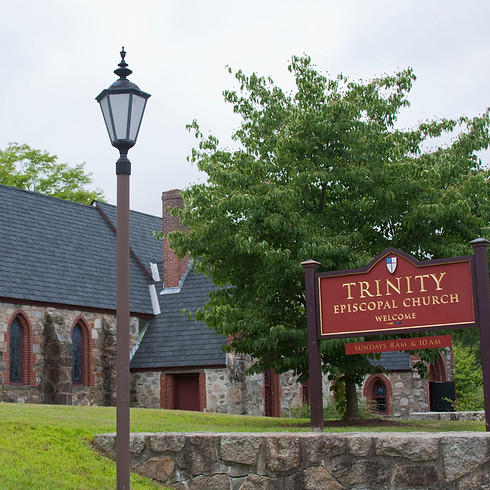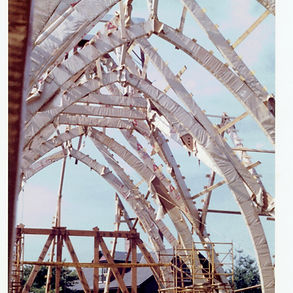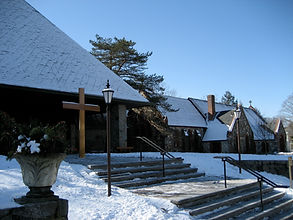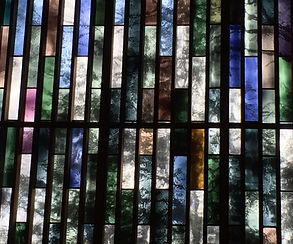Making an Impact
Delivering
Making an Impact
Delivering

Trinity’s History and Buildings
Trinity Church is located in Concord, Massachusetts, a town settled in 1635 by Puritans. For more than 200 years there was no Episcopal presence in town. Back then, the one church in Concord (First Parish) was supported with town funds and administered by town officials. Not until the early 19th century did some members of this Unitarian church break away to form the present Trinitarian Congregational Church, paving the way for religious diversity in town.

First Episcopal Services
The first recorded Episcopal service in Concord occurred in 1854 at the burial of an infant. Subsequently, a few newly arrived families who had experienced Episcopal worship in larger cities began to meet for services in private homes. For almost 30 years a small group met occasionally at first, but later became more organized, inviting various clergymen to lead their services. In 1883 the Diocese of Massachusetts determined that there was enough support to establish an Episcopal mission in Concord with the Rev. Edward A. Rand of Watertown engaged to conduct regular services.
1884 Cornerstone
The ladies of Trinity Mission procured enough money from townspeople through donations and the proceeds from Concord’s first church fair to buy land for a church building. John H.
Chapman, a Concord resident and architect with offices in Boston, drew up plans and served as supervising architect during construction, with all services donated, although he had no personal connection to the church. The cornerstone was laid at the present site on Elm Street on Ascension Day in 1884. Bishop Benjamin Paddock consecrated the small neo-gothic church on January 3, 1885. Having received approval of its constitution and bylaws in accordance with the Episcopal Diocese of Massachusetts and by act of the Diocesan Standing Committee, Trinity Mission became Trinity Parish on May 16, 1886 and was formally admitted into union with the Diocesan Convention in 1889.


A Stone Chapel
Many people in Concord supported the Episcopalians in building their church, including Concord notable Bronson Alcott, who not only donated money to the building fund but also observed the laying of the cornerstone from his carriage. Others were not so sympathetic. In his 1885 book, Houses and Owners in Concord, Judge John S. Keyes wrote, “next east is a small stone chapel built by the Episcopalians with the aid of Unitarian subscriptions. They have neither number, wealth or position to support such a church. They had better have gone to some other place rather than to have brought here such a disturbing, proselytizing institution as no one wanted.” Over the next 30 years, however, four successive rectors led a growing flock that won over their fellow Concordians as noted by Adams Tolman: “This church has evidently filled a want. The congregation has grown and its ministers have done fine service in the town.” Growth in membership provided funds to modernize the building and on Christmas Eve 1900 the church was lighted by electricity, relegating the kerosene lamps to the basement, and the organ’s bellows were operated by a water-powered motor, displacing the man who had previously pumped them. Three years later funds were raised to purchase a rectory.
Social Activism
In 1907 the Rev. Smith Owen Dexter was called to accept a ministry that continued for 25 years. “A sweet and unworldly man,” Mr. Dexter was a social activist, extending his concern into Boston, where he demonstrated for clemency in the Sacco and Vanzetti case, and to Lowell, where he joined a march during the textile mill strikes. In addition, he hosted at Trinity a conference for the fellowship of Youth for Peace, a controversial group at variance with some more conservative local groups. Although his political leanings concerned the congregation, the vestry and parish stood by him with great affection. During his tenure, a parish house was built, a telephone installed, and a new organ purchased. Mr. Dexter continued to serve Trinity through the years of the First World War, although he was granted a leave of absence to volunteer as chaplain at Fort Devens in 1917-18. He stayed at Trinity until 1932, when he left to become rector of the Church of the Good Shepherd in Boston and Chaplain of the Robert Brigham Hospital in Roxbury.



Enlarging the Chancel
That same year, the Rev. Charles Russell Peck was called as rector. Under his ministry the parish continued to flourish to the point where more space was needed. In 1937 a Building Fund was established, and monies were raised through knitting projects, concerts, a lecture on the Washington Cathedral and another on stained glass, a play and the sale of a “Concord Cookbook.” In 1941 the chancel was extended and refurnished by Concord architect and parishioner Harry B. Little. The organ was moved and stained glass windows by Charles J. Connick, G. Owen Bonawit and Wilbur Herbert Burnham graced the building. Mr. Peck shepherded the parish through the end of the Great Depression, World War II and another parish building project. A history enthusiast, he left Trinity in 1946 to become vicar of Christ Church (the Old North Church) in Boston.

Parishioner Involvement
Later that year the young, energetic Rev. Bradford Hastings was instituted as rector. Under his direction a parish survey was undertaken and “commissions” were organized to involve parishioners in all aspects of parish ministry: worship, education, fellowship, finance/property, and social responsibility/community involvement. The growing number of active members necessitated the hiring of a parish secretary. Students from the Episcopal Theological Seminary in Cambridge were employed to assist with Sunday school classes and services. In 1948 two bays were added to the nave increasing the worship space of a flourishing parish. Rev. Hastings resigned in 1951, just as a new wing was being added to the Parish House.

Bursting at the Seams
Trinity’s next rector was the Rev. William Clark. Through his leadership, the parish gained a deep sense of commitment to the ecumenical movement. The congregation continued to grow: parish programs were increased and extended, services were doubled, Christian education classes were happening in every available room in the Parish, and annual meetings were held in school auditoriums in order to accommodate everyone. In 1960 an associate minister was hired and a second residence located on the adjacent River Street property was purchased for his family. When Mr. Clark took a 9-month leave of absence to study in England, Bishop Malcolm Endicott Peabody came out of retirement to assume Clark’s duties and became an important part of the parish.


Building the Big Church
Once again, the congregation had outgrown the church. Mr. Clark and then Bishop Peabody supported and encouraged the parish to develop plans for a new building. The vestry appointed a building committee that hired Pietro Belluschi of MIT as the architect. To create space for the addition, the rectory on Elm Street was sold and moved across the Elm Street bridge to the corner of Wood and Main Streets. A new rectory across from the church on Elm Street was purchased. The process of reaching parish consensus--first on the location and then on the design of the new church building--required courage and commitment. The invaluable gifts of time and patience on the part of volunteer building committee members and the flexibility and vision of the architect finally resulted in a large semi-modernistic building of simple lines attached to the old church. The extensive use of wood and rough stone was chosen to harmonize with the old building. On entering the new church, one is struck by its vaulted spaciousness and by Gyorgy Kepes’ glorious Chartres glass window representing the Trinity. The seating, which accommodates 600 people, was designed so that the congregation surrounds the altar on three sides. The organ and choir pews are located behind the altar, on the fourth side. The space beneath the church, known as the undercroft, houses several rooms for Sunday school classes or small group meetings as well as a central room used for large gatherings. During the building’s construction Rev. Clark submitted his resignation to accept a position with the World Council of Churches in Switzerland, leaving his associate minister, the Rev. Mr. Graham, in charge. As a parting gift to the parish and town, Mr. and Mrs. Clark donated a lectern in the new church that bears the symbol of the ecumenical movement.


Completion & Dedication
In 1962 the Rev. Nigel Andrews was called to be Trinity’s ninth rector. He oversaw the building’s completion and its dedication on October 6, 1963. The original stone church, renamed the “chapel,” was subsequently used for early morning and mid-week services as well as for smaller weddings and funerals. Continuing the legacy begun by Mr. Hastings and supported by Mr. Clark, Mr. Andrews encouraged the active participation of lay people in all areas of church life, both inside the parish and out in the world. In 1966 he appointed Eleanor Spinney, who had served as Director of Christian Education, to be Lay Assistant Minister. There followed an artistically creative time when organist/choir director Connie Andrews, the rector's wife, organized and produced interesting chancel dramas and several well-received musical events with parish involvement. These included a Haydn mass sung at the national cathedral together with the choir of Lexington's Church of Our Redeemer - an event that was reported as having been perhaps the only time when Lexington and Concord were in harmony.


A Tumultuous Time
As a part of its outreach to troubled youth, Trinity participated in an ecumenical effort by all the Concord churches to establish a youth center. When no other space could be found, Mr. Andrews urged the vestry in 1970 to host a teen drop-in center called “The Place.” The controversy over the use of Trinity’s building for this purpose, the political turbulence of the late 1960s and 70s in the whole country and the liturgical changes in the National Church combined to decrease membership during this period. While the trial liturgies, national revision of the prayer book and the movement for the ordination of women were difficult issues for many parishioners to reconcile with their traditional worship expectations, most tried to understand and to accept the changes. A few embraced the new liturgy with its modernized language and one person generously donated the funds to purchase the revised Book of Common Prayer for the whole parish. Rev. Andrews’ time in Concord was generally a tumultuous one that included protests against racial segregation, both in the South and in Boston. He pushed his congregation to get involved, leading by example. Ultimately, however, it was a time when many people started pulling back from the church in general.

Transitions
In 1979 Mr. Andrews resigned and the Rev. Theodore Bowers served as Interim Priest. The first woman priest on Trinity’s staff, the Rev. Margaret Lee Ferry was hired as Assistant, later becoming Interim Priest-in-Charge until a new rector was called. The Vestry, seeing the trend toward offering a rector a housing allowance in lieu of living in a rectory, sold the rectory across Elm Street.
Christian Education for All
The Rev. David Barney was called from Daphne, Alabama and began his ministry on September 1, 1981. During his 20-year tenure, Rev. Barney helped the parish heal some of the divisions of the 1970s with his gifts of teaching and preaching. Rev. Barney believed that everyone should have the opportunity of weekly Christian education, and so he scheduled Sunday School for children and a Forum for adults between the two morning services. Following a midweek Eucharist, he also held a Bible Study class. Children’s involvement at the 10 o’clock service had previously been limited to the Youth Choir’s anthem sung several times a year. Based upon Rev. Barney’s assertion that children were not just the future but the present of the church, those eight years old and up were encouraged to become acolytes, ushers and readers. Children were also allowed to receive communion before being confirmed, if they expressed genuine interest.


Stained-Glass Windows
In 1984 the parish celebrated its “First Century” with fundraising that supported renovations to many of the parish facilities. Since 1990 the buildings and gardens have been altered to accommodate a changing congregation. Through the efforts of many over several years, a Memorial Garden was established in 1994. The parish also worked tirelessly to find acceptable solutions to making the Church’s spaces accessible to all. In 2001 these efforts resulted in the installation of an elevator that reaches all five levels of the facility and several ramps both inside and out so that everyone may participate in the parish’s worship and activities. Quietly and often behind the scenes, Rev. Barney also finished outfitting the old chapel with both traditional and modern stained-glass windows.
A New Parish House
After Rev. Barney retired in March 2001, the parish entered a 2-year period during which services were led by two women, the Revs. Terry McCall and Lily DeYoung, interim priest and assistant. In April 2003 the Rev. Tony Buquor began his ministry as Trinity’s 11th rector. His formal installation was held on Trinity Sunday 2003. Rev. Buquor spent over a decade of his popular rectorship helping the congregation to discern its need for a completely new parish facility to house its many ministries and to be better stewards of the environment. In May 2015 the completed Parish House was commissioned by Bishop Alan Gates, who encouraged the parishioners to “wear it out” with activities. A year later, Rev. Buquor retired on Trinity Sunday 2016.



Weathering the Pandemic
After a year of interim service by Rev. Sarah Conner, Trinity called its first female rector. The Rev. Nancy Hagner moved to Concord in September of 2017 and was instituted on December 5. Her ministry was severely tested by the COVID-19 pandemic beginning in March 2020. All church buildings were closed to everyone but the rector and the sexton, who managed to complete many long-overdue repair projects during this time of isolation. Fortunately, Rev. Hagner was living in the adjacent River Street clergy residence that had been recently rebuilt. The clergy, staff and lay leaders discovered creative ways to hold services and stay in touch with the congregation. Long-time organist Robert Barney and choir singers recorded themselves in isolation and produced virtual music for services through some high-tech magic. Parishioners watched from home via Zoom before unmuting themselves to participate actively in virtual coffee-hour sessions. Baptisms and funerals were held outdoors, and there were drive-by opportunities to engage in Sunday School activities and to pick up wafers for communion at home. During the first winter, church sercies were held on the Elm Street porch, with intrepid clergy and congregants masked and gathered under heaters. Later, services returned to the large church building with all windows wide open and everyone still masked for many months.

Looking to the Future
Undeterred by the pandemic and looking to the future, parishioners generously supported a year-long JOY Campaign that resulted in ongoing funding for outreach ministries and for Trinity’s first full-time Youth and Family Minister position. Vestry leaders who were meeting online during COVID quickly recognized an effective way to reach their home-bound parishioners and authorized funding for the live-streaming of church services. This inclusive practice has been expanded to include other events and continues to this day. Our parish is now back in all spaces celebrating “being the church” together—in person and online through the miracle of technology.
The spirit of that group of Episcopalians who built the original stone church in 1884 lives on in the steadfast love and commitment of today’s clergy, staff and parishioners. A grateful parish endeavors to exemplify that spirit in its worship, in-house parish programs and community outreach.

History and Photo Credits
• Baker, Morton H., “Trinity Church, Concord,” in The Episcopal Diocese of Massachusetts, 1784-1984, A Mission to Remember, Proclaim, and Fulfill, Mark J. Duffy, ed. The Episcopal Diocese of Massachusetts, 1984, pp. 280-283.
• Barney, Rev. David, Interview, Concord Oral History Program, 2001. https://concordlibrary.org/special-collections/oral-history/Barney.
• Keyes, John S. and Tolman, Adam, Houses, and Owners or Occupants in Concord,1885, 1915-19, courtesy of the William Munroe Special Collections at the Concord Free Public Library.
• Martin, Keith T., Photo of Trinity Church from Elm Street, 1953.
• Spinney, Eleanor, “My Memories of Trinity,” spoken at the 125th Parish Celebration, May 24, 2009.
• Tower, Frederick Alonzo and Miller, Marian Blackall, A History of Trinity Church 1884-1962. Concord,1970.
